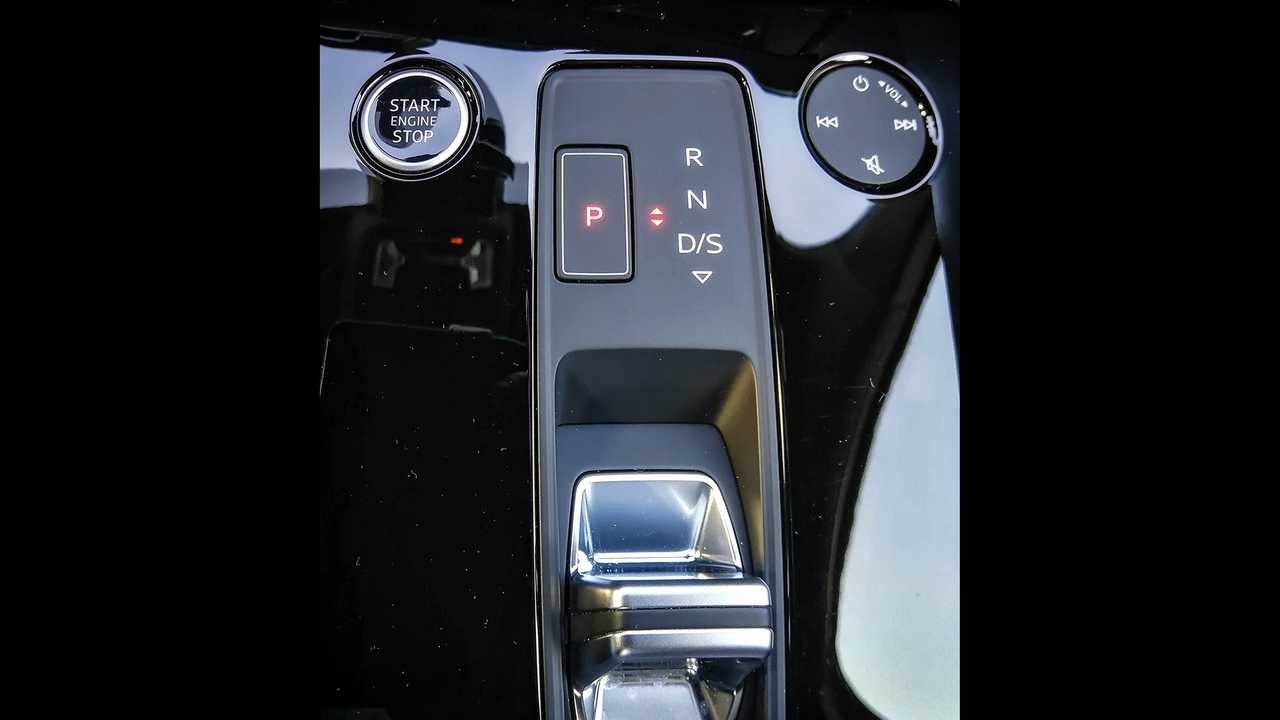
Exit warning systems, automatic emergency braking, and ADAS are just a few of the car technologies that make driving safer and more comfortable. You might be wondering if your car has these features. ADAS (or advanced driver assistance system) helps cars avoid pedestrians and obstacles. They are becoming more important as cars get more advanced. What car technologies are worthwhile? You will find out which ones add real value to your driving experience.
Alert system to exit
Ford engineers are working on a new mechanism for the vehicle’s door. This will prevent it opening until the occupant is free from the danger. Fortunately, the mechanism can be overridden manually if the occupant chooses to stay in the vehicle. Ford is also testing Exit Warning on cyclists and drivers using different road layouts. Once the system has proven to work as promised, it is likely to be included in new Ford models soon.

Smart control
Smart cruise control, and autonomous driving are some of the most recent trends in car technology. These features can cut driver fatigue, but they can also be problematic. These devices can be unable to function in adverse weather conditions because the sensors lose focus and can become unusable. Before deciding on a smart-cruise system, drivers should compare features and read reviews. Adaptive cruise controls can adjust your speed to match traffic conditions. Other systems will only slow you to a specific level and offer limited steering assistance.
ADAS
ADAS, or advanced driver assistance systems, are among the most important innovations in the automotive industry. These systems allow drivers to better control their cars and lower their chances of being involved in an accident. ADAS consists mainly of a range of sensors and interfacings as well a powerful computer processor. These computers continuously analyze the environment and decide whether to take any action. ADAS systems prevent accidents, and will eventually lead to fully autonomous cars.
Digital cockpit
Today's automobile technology allows us to find the latest innovations in automobile technology. We can make better decisions while driving by using digital instruments and dashboard. The digital instrument panel also integrates various features such as front, rear and side cameras that help us see and stay safe while driving. These systems use sensors to warn us about hazards and prevent accidents. These technologies make driving safer and can even help save gas.
Smartphone connectivity wireless
While automakers have taken wireless connectivity seriously as a way of keeping their customers connected to their cars and trucks, there are still many that are not up to the challenge. Apple and Google have mostly perfected the link between car and human. Android Auto and CarPlay allow drivers to interact via the touchscreen with their smartphones. In addition to touchscreen interaction and voice-operated commands, the increasing number of states have hands-free laws.

Navman move120M
You may want to invest in a GPS system for young drivers. The Navman Navman 120M will alert you to red lights and speed cameras. It can also help find your way home and the nearest petrol station. For young drivers, it is a smart idea to have a dash camera installed in your car. This can be very helpful in situations when they may not realize they are speeding.
FAQ
Is it hard to get work as an auto mechanic?
Yes, it is possible. Many garages have vacancies that are advertised online. Many people apply because they think it will be fun. Try applying to a few jobs and seeing if the garages accept student applications. Ask your friends and family to recommend anyone in the field. They might be willing to recommend someone.
What are the requirements of an auto technician?
You must have high school, or GED, and be able to read and write well in English and math. It is also necessary to be able both to read and to write. You will need to pass a written test and then go through a series of practical exams before being allowed to start work.
What is the job description for a mechanic in a car?
Car mechanics can find work in three areas:
-
Automotive repair shops
-
Dealerships
-
Independent garages
Automotive repair shops
This is where most people consider becoming a mechanic. It's the easiest way for most people to get started. You have two options: work in an existing shop or open your own.
If you plan to work in a shop, you must apply to join the union. Once accepted into the union you will be trained by the union.
Once you complete the training, it's time to get started.
Register with the government if you want to open your garage. After you have registered, you will need to meet certain standards.
After you register, you will be granted a license for your garage to operate.
Your license allows you to sell spare parts and make minor repairs. It will not allow you to repair major engine problems.
You will be expected to sell spare parts and also offer guidance and advice to customers.
Dealership jobs
Many dealerships have mechanics who are experts in one particular area. They may be trained to replace or repair tires, or they may specialize in brakes.
However, some dealerships also hire general mechanics who can handle all aspects of car repairs.
These positions often require applicants to undergo specific training before being allowed to work. This allows employers to pick the right candidates for their jobs.
Some dealerships will even hire graduates right out of university. These graduates already have a basic understanding of mechanical engineering, so they are able to learn all about cars.
Independent garages
Independent garages aren't associated with any particular dealership. They tend to be focused on high-quality service.
Independent garages have the ability to afford higher wages, as they aren’t associated with any one company. These jobs generally pay better than those at dealerships.
Independent garages don't necessarily make for better work environments. Many owners prefer to control their businesses themselves, rather than delegating it to employees.
You may find yourself working for long hours and not having control over the day.
Expect to earn lower salaries than if you were working in a dealership.
You can switch jobs easily. Ask your employer if you would like to work as a mechanic at a dealership.
Alternatively, if you'd like to work at an independent garage, then you could try applying directly to the owner of the garage.
The bad news is that finding a new job isn't always easy. Many other factors can also influence the amount you earn.
For example, the type of vehicle you repair and whether you charge extra for labor.
What do I need to know about car mechanics?
You don't need to know anything about cars to work as an auto mechanic. You only need to know how to fix them. That's why most people start doing jobs like fitting brake pads or changing tires before progressing to more complex repairs.
You'll need the ability to read and understand diagrams and to follow simple rules of good practise. It is also important to know how to determine if parts are damaged or need to be replaced.
You should not attempt to fix vehicles without proper training and guidance. This is especially true when you are dealing with costly components like engines and transmissions.
Although you won't have to know much about automobiles, you must be familiar with the basics of mechanical engineering as well as physics. This means understanding the principles behind how engines work and how brakes function.
It's also worth noting that you'll need to be prepared to deal with all sorts of situations. If your vehicle has been in an accident, you might need to be able to handle it. Experience with accidents and breakdowns is also a must.
Finally, you must be willing to learn new skills quickly. It is important to be able both to diagnose problems and perform simple maintenance tasks, such as tightening nuts.
How long does an apprenticeship in automotive mechanics last?
The apprenticeship to become an automotive mechanic takes about three years. The apprenticeship includes two years studying at school and two more as an apprentice. The first year of training is spent in the trade. This includes theory and practical skills as well as safety procedures. You will also learn to use tools efficiently and safely during this period. After the first year, a second year will be spent on-thejob training. This year you'll get experience in different trades. You'll have the opportunity to attend formal courses during these periods too.
The last year of the program is dedicated to gaining certification and qualifications in the field. These include NVQs, which are obtained after passing industry-specific exams. The HNCs (Higher National Certificates), on the other hand, cover general subjects like customer service and management. Finally, there are City & Guilds certificates that are offered for those who wish to become qualified in certain trades.
Is it hard to be a mechanic apprentice?
It is not easy but it can be done quickly. There are many opportunities for advancement.
You need to have patience and perseverance. You must also know how to fix cars, trucks, and motorcycles.
Customers and family members will put pressure on your shoulders to help you succeed. You shouldn't feel pressured to make decisions that you don't like.
If you like fixing cars, this could be a great career option. This is a job that allows you to earn a decent income and grow your business.
However, you might prefer to go down another route. This is where you might be interested in becoming a technician.
This requires you to use your technical expertise in support of other workers. You could help technicians troubleshoot problems or teach them new techniques.
Another option is to become an advisor in service. Here, you'll provide advice and assistance to customers when they bring their cars to a garage.
Your choice is based on what you choose to do. There are many choices available and you can choose what suits you best.
Statistics
- According to the BLS, total auto technician employment is expected to exceed 705,000 by 2030. (uti.edu)
- Apprentice mechanics earn significantly less hourly than mechanics who have completed training, with a median wage of approximately $14.50 an hour, according to PayScale. (jobhero.com)
- According to the BLS, the median annual salary for automotive service technicians and mechanics in the United States was $44,050 in May 2020. (uti.edu)
External Links
How To
How to properly diagnose your vehicle for repair
The symptoms of your vehicle are the first thing you need to look at in order to determine whether it is in dire need of repairs. Next, you can follow these steps in order to diagnose your car.
-
Check engine lights. The dashboard light indicators, including the engine light, oil pressure gauge, battery light indicator, coolant temperature gauge and RPM gauge, should be checked. It could indicate that your vehicle is having problems.
-
Inspect the tire treads. If the tires are worn out, they could cause problems with handling and braking. The treads of the wheels should be inspected as well. They should look clean and be smooth. You can do this by taking off the wheels. Use a flashlight to see how well the treads are worn.
-
Monitor the level and consistency of your brake fluid. You must keep track on the level of brake fluid in your vehicle. This helps ensure that your brakes operate properly. If the brake fluid level is low, your brakes might fail when you apply pressure to them.
-
Check the suspension system. Most vehicles have a suspension system that absorbs shocks and vibrations. It gives you better control and allows for smoother accelerations and decelerations. Your vehicle might feel wobbly, or shake uncontrollably if it has a bad suspension. To test whether your vehicle has a suspension issue, try putting weight on the front or rear axle and observe the movement.
-
Examine the steering wheel. Steering columns are used to connect the steering wheel to the rest of the vehicle's components. Sometimes, steering columns are damaged by accidents. Replace it if your steering column feels loose or unsteady.
-
Pay close attention to the exhaust tube. The exhaust pipe helps move gases from a combustion chamber into the atmosphere. If your exhaust pipe leaks or cracks, it will allow harmful fumes into your cabin. If your tailpipe bends, it is important to fix it immediately.
-
Take a look at the underside of your hood. To check for unusualities, look under the hood. Fluids could be leaking from your engine. If you smell something strange coming from your engine compartment you should call a professional technician.
-
Make sure to check the air filter. Your vehicle's air filter collects dust and debris from the outside environment. Dirty air filters can cause your vehicle to run poorly. Replace your air filter regularly.
-
The fan belt should be checked. The fan belt that connects your vehicle to the transmission is called the engine fan belt. The engine will not turn if the fan belt breaks. Replacing the belt is simple. All you need are a screwdriver & pliers.
-
Make sure you inspect the radiator hoses and hoses. The radiator hose carries water from the radiator to the engine. It can crack or become damaged and leak hot liquid onto an engine. To repair the leaky hose, all you need is a pair if needle-nosepliers.
-
Check the windshield wipers. Windshield wipers use electricity to wipe away rain and snow. If they stop working, they could leave streaks on your window glass. The solution is to change the washer fluid.
-
Make sure you check the cables. Your car's electrical system is powered by batteries. Always disconnect the negative wire before you replace batteries. Failure to do so can damage your alternator.
-
Make sure your headlights are working properly. Headlights are used to illuminate the road ahead. Poor visibility can result if the headlights don't function properly. Check the bulbs to see if they've burned out.
-
Always check your lights. Lights warn other drivers when you approach them at night. If one doesn't work, it could distract you and lead to an accident.
-
Inspect your brakes. Before you collide with another vehicle, brakes will slow down the car. If they aren't working correctly, you could lose control of your car and crash.
-
Make sure to change the oil. Your engine will stay lubricated by the oil. It prevents metal parts from rusting too quickly. It is recommended that the oil be changed every other month.